How to teach reading and build functional literacy is a question I get asked a ton, particularly about students with autism. So many of our students can read the words, particularly sight words, but have really no idea what they mean.
As Dr. Peter Gehrhardt said in a presentation I watched recently, “You need to have sight-meaning to go with your sight words.”
There are multiple elements, of course, that go into reading. Recognizing the word is part of it, but there needs to be understanding of the what the word signifies or means to really be considered comprehension. And to do that, there needs to be some background knowledge and language comprehension / processing to make that work. Which is why functional literacy is the key component that encompasses the approach.
What is Reading With Sight Words?
So, when we teach sight words, we really have to work hard to assure that students who lack background information and language skills, have a way to gain those elements and connect with the actual meaning of the word. This fosters understanding of the words as well as adaptability and generalization of the skill. Sometimes it’s sufficient to know that when I read, “add a carrot” it means to add that orange, long vegetable to what I am cooking. But of course it also may mean the orange, chopped carrot. Or the orange shredded carrot, dependent upon what you are making. In other words, they have to be able to generalize their understanding to the context of the situation.
So, I’ve been trying to work on this for students who are learning environmental print. Typically they are learning environmental print through sight words; but they could learn them phonetically. We tend to teach environmental print (e.g., menus, signs) when students struggle with reading and we want to ensure that they have the words they need to successfully navigate their day.
Today I’m going to use my Food Words Interactive Books to talk about ways you can use text and print books to build understanding of the comprehension of read sight words. And along the way I’ll share some strategies to use with them that will help build comprehension.
Using Functional Literacy with Sight Words for Environmental Print
The books are designed to tell simple stories using the 100 Food Word sight words in the corresponding task cards, file folders, worksheets and BINGO games. All of these are designed to help move the students to better recognizing and then understanding the words they are learning. And they are written at about a first, maybe 2nd grade level. They are also part of a whole kit of teaching functional literacy skills including discrete trials and fluency here.
Matching Words to Pictures
The interactive books, because they target food words, focus on food shopping in different venue (e.g., farmers’ market, fruit stand, grocery store), ordering food in a variety of restaurants (e.g., taco truck, fast food), and preparing food (e.g., cooking, picnicking). Students match word to the page that talks about that word. You can use corresponding pictures to match as well, but the focus is on matching the word.
Identifying Missing Words in Sentences
The sentences in these books have missing sight words within the sentences that are typically completed with the velcroed word and picture. That presents a great opportunity for them to tell you what word they think is missing. You could also use the word manipulative or just have them write it in dry erase marker if you laminated the books.
Building Context for Environmental Print
While students are still matching words to pictures, they also are learning how these words are used in different situations involving food for building functional literacy skills.
In addition to the interactive component of the books to keep students engaged, you also can use the books to discuss background knowledge (e.g., have you been on a picnic? What did you eat at the picnic?; or “What did we buy yesterday at the grocery store?” “Do you like pancakes for breakfast?”). By expanding the discussion of the food words, we make it more likely that they have real meaning for the student.
You can extend this learning, of course, by going to some of the places in the books (e.g., grocery store, fast food restaurant). In those settings, have students find the items on a list or a menu and then identify them when they see them in the grocery store aisle or on the table.
Literal Questions (whose answers can be found in the text)
While answering questions can’t be the only way to expand a student’s comprehension of text, it is a way to talk about the text and what they have read. Given that many of our students have difficulty with comprehension specifically because of issues with language comprehension, it is helpful to have discussions about the story and the text. This allows them to process the concepts of the text.
What Questions:
To expand reading comprehension and functional literacy beyond just matching word to picture, students can answer questions about what they have read. The most common question would be “what” questions focused on what food was discussed in the book. For example, in Mike and Kira Grab Fast Food, you might ask, “What did Mike order to drink?” or “What did Kira order for dessert?” Or a simpler question might be “What did Mike order?”
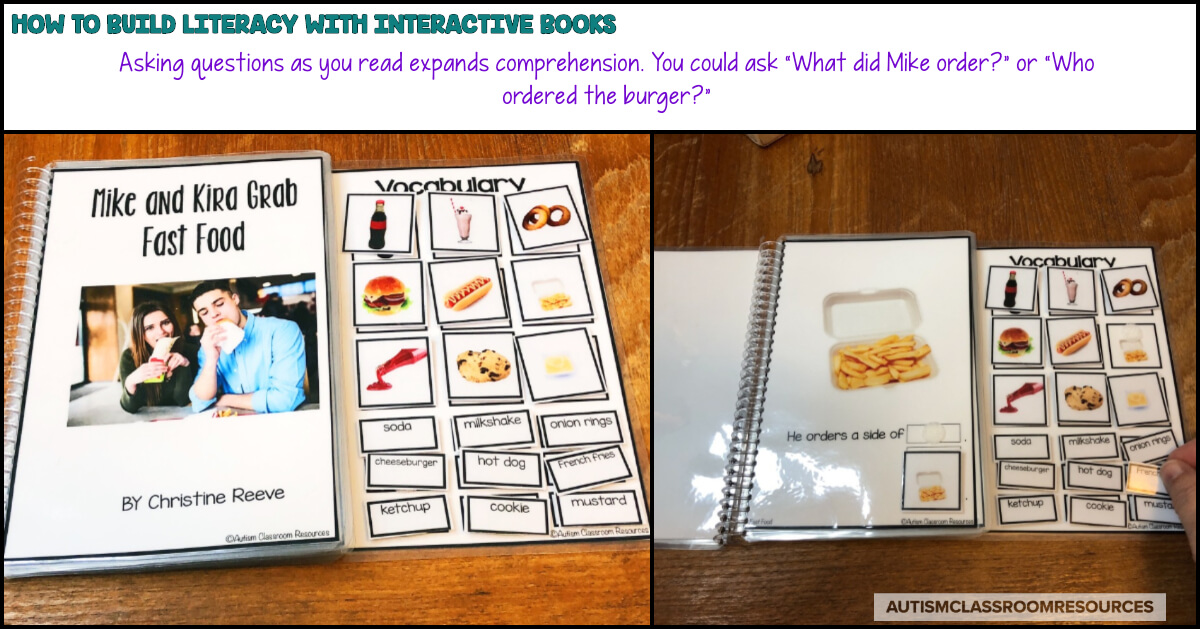
Who Questions:
If you are looking to expand beyond identifying the food words, you can also ask Who questions about most of the books. Most have at least one or two characters you can talk about. So, in Jayla Sells Vegetables at the Farmer’s Market, you could ask, “Who bought the broccoli?” (answer, “Mike”). Clearly this expands the reading comprehension beyond just the sight words. But even if the student just points to the word, “Mike” she is building functional literacy skills of how words are put together in sentences and finding relevant information in a text.
Where Questions:
Each of the books would allow you to ask Where questions. Again, this moves beyond the sight words, but builds functional literacy of finding the sight words and understanding the text. For example, you could ask “Where does Jayla sell vegetables?” “at the farmer’s market.”
Other Questions:
While the students could sequence the activities of the book, they aren’t in any type of predictable order, so inferential questions would be difficult. However, you can help them understand the community environments or daily living situations in which the books take place. You could ask about their experiences with a taco truck or whether they have ever been to a buffet to incorporate functional literacy.
Building Confidence as Readers
And finally, the reason I like using these books the most, are that the build confidence of the students who read them. They are able to read them, even with some help. Each student can interact with the book in some way, regardless of reading level. And they are lower level text about relevant topics in their lives that are appropriate or older students. And, to be honest we can’t discount the contribution of confidence in trying to read. That is one of the true gifts of functional literacy.
You can grab the functional literacy books in my store below. I will be adding lists of questions you can use to teach with them for each book. If you buy them now, you’ll be able to re-download for free when the questions are posted. In writing this post I realized that it might be helpful for the teacher or it might be helpful for para-run centers so the students can get more out of the books than just one reading.

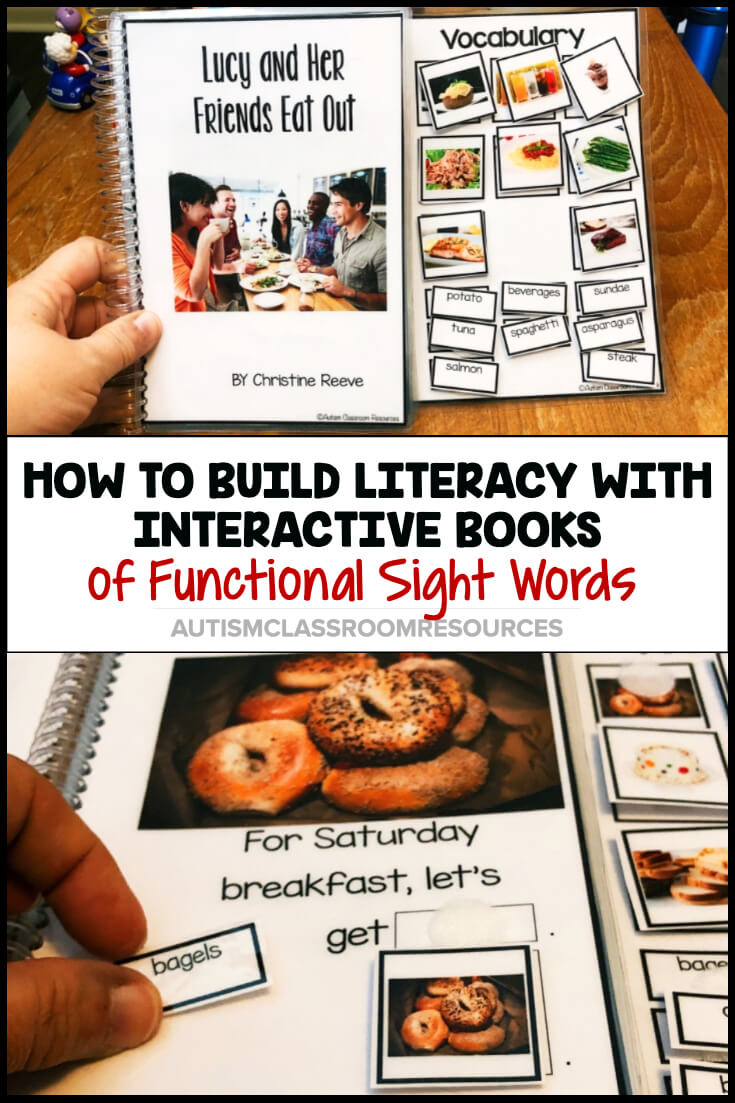
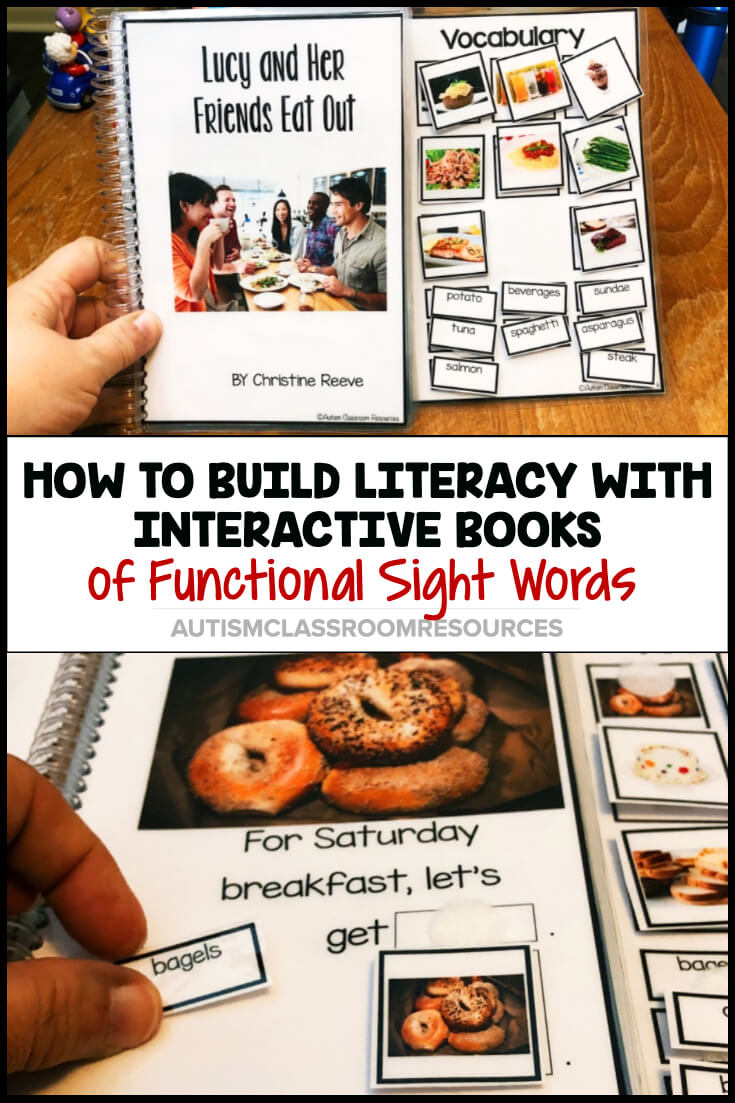
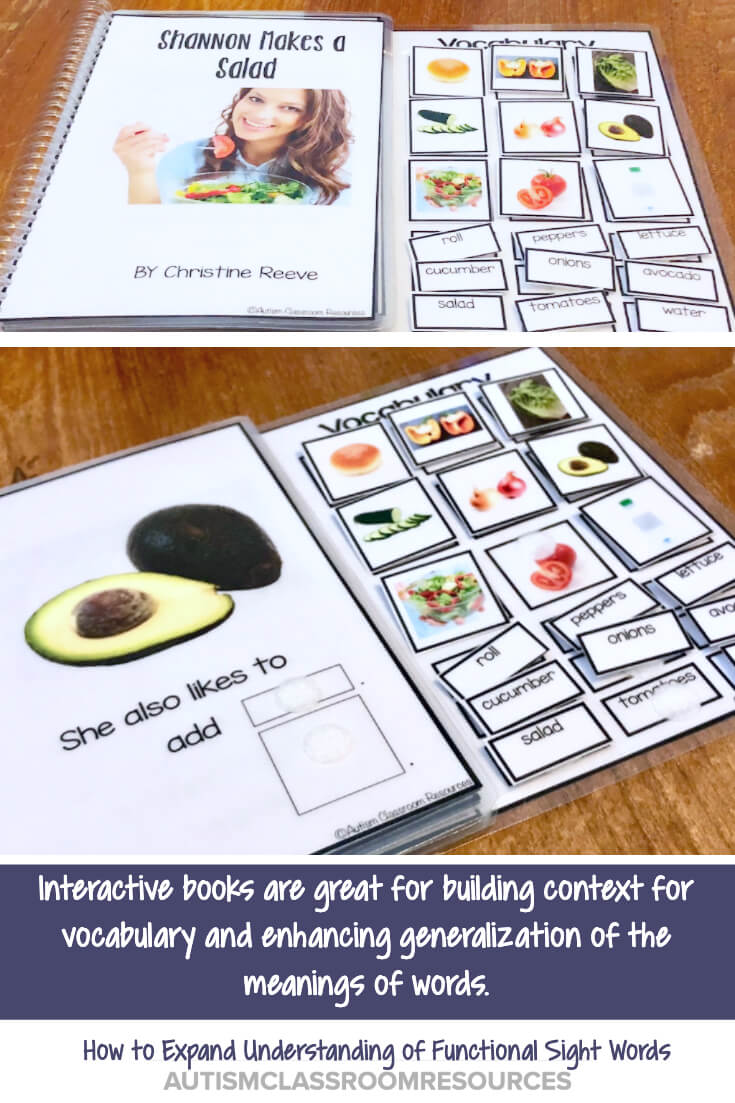
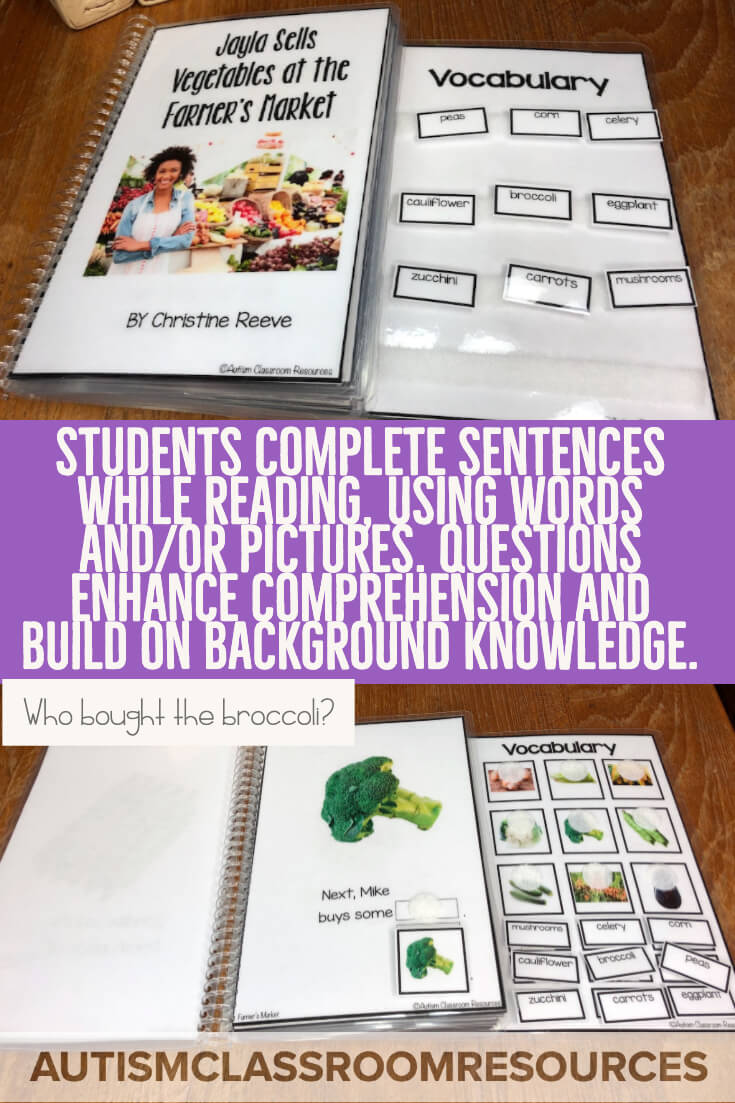
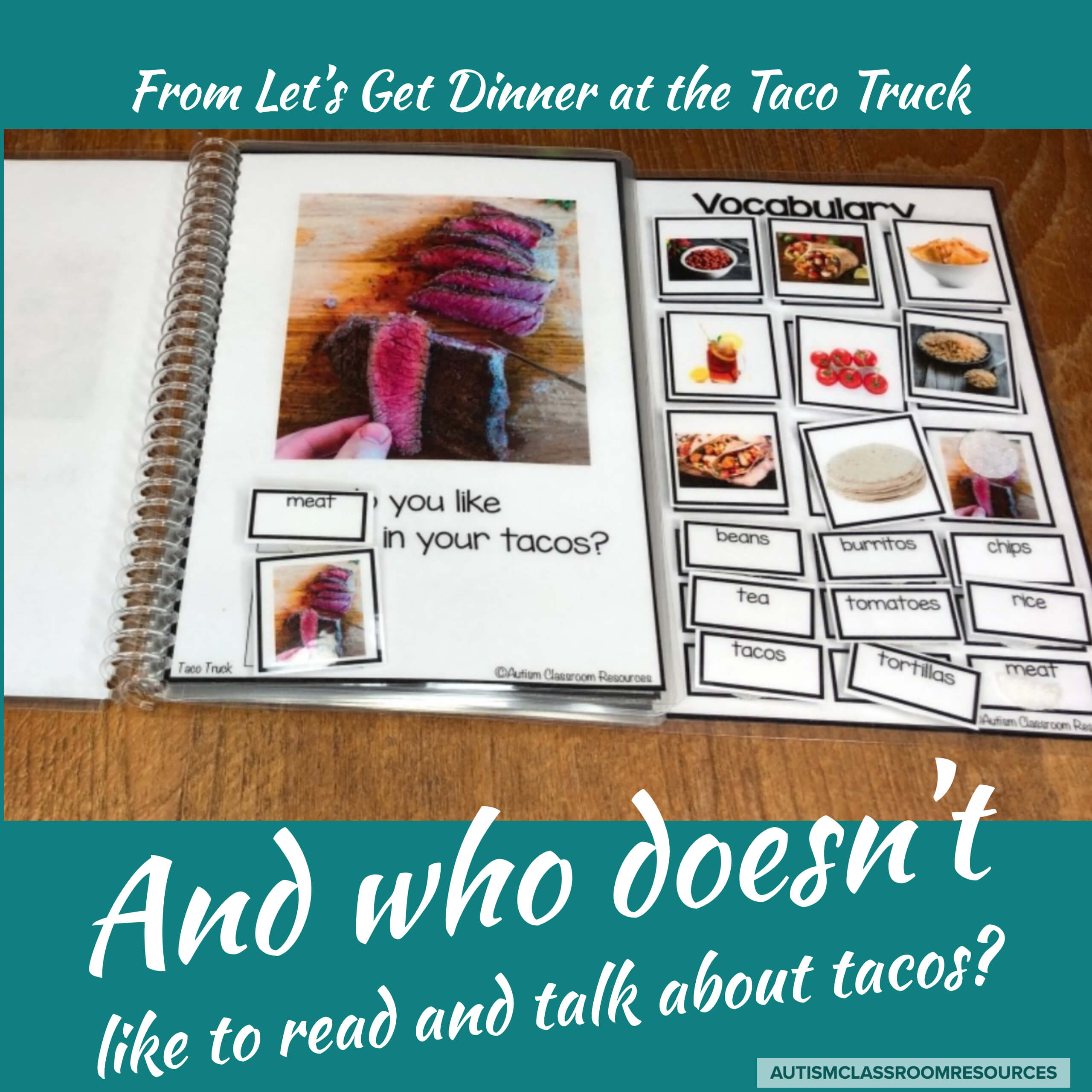
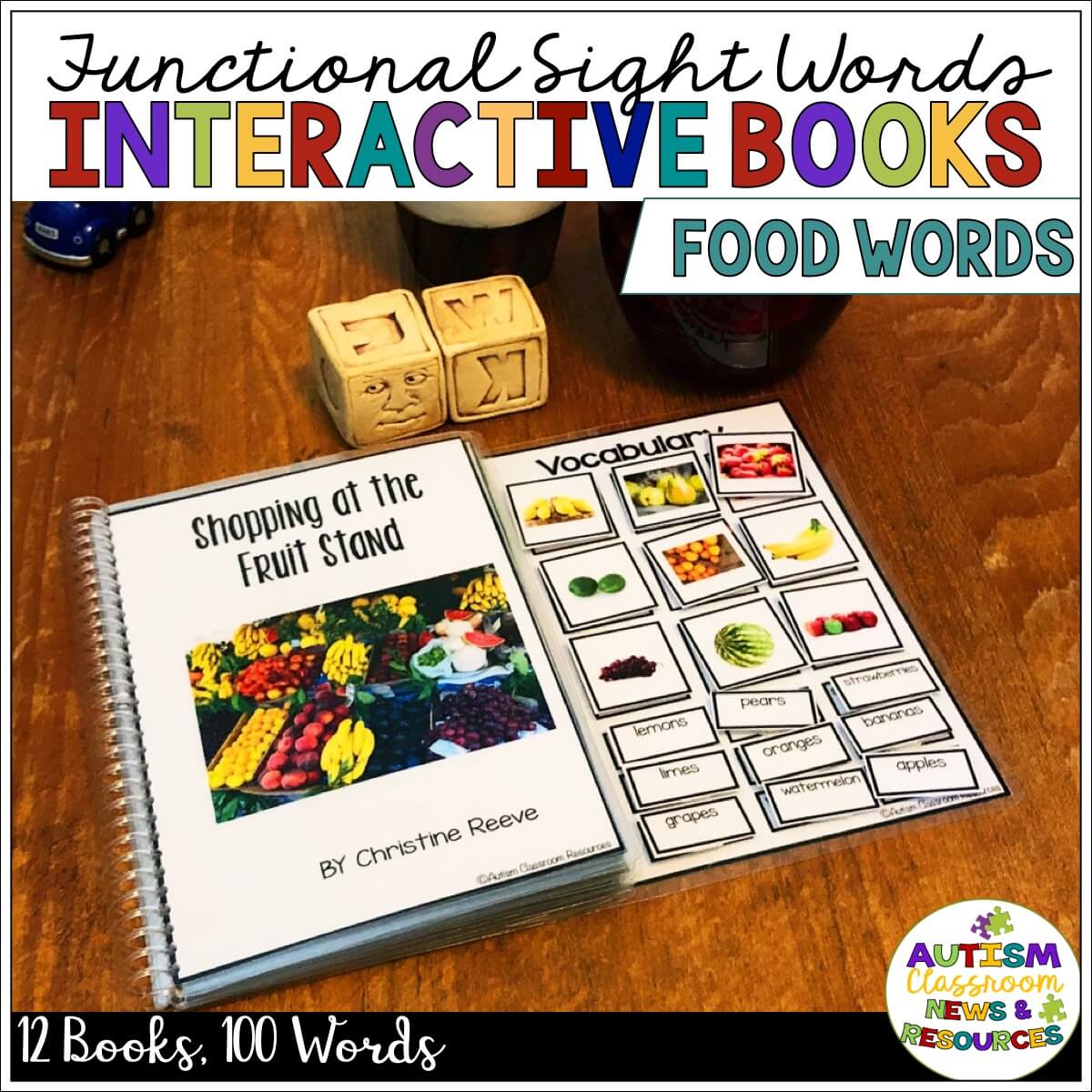


![Summer resources to help survive the end of the year in special education [picture-interactive books with summer themes]](https://autismclassroomresources.com/wp-content/uploads/2018/05/SUMMER-RESOURCES-ROUNDUP-FEATURE-8528-768x768.jpg)

